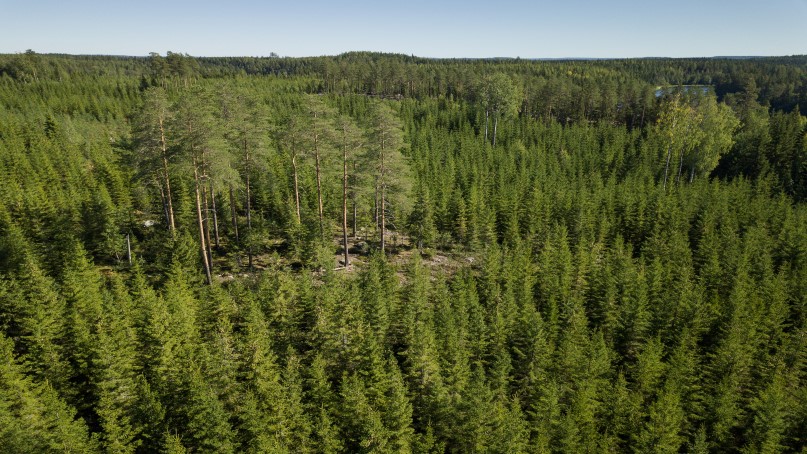It takes into account people’s current and future needs and rights, ensures the conservation of ecological values, and safeguards the economic significance of commercial forests. The realisation of these principles is monitored through audits carried out by an independent party. The aim is that the users of wood-based products can rest assured that the wood used to manufacture the product is sourced from forests from which wood is harvested legally and in accordance with sustainable forest management principles.
Forest certification helps you ensure the wellbeing of your forests and increase your wood sales.
Certification supports the management of your forest and the wellbeing of the forest environment. It helps you ensure sustainable wood production, safeguard valuable nature sites and protect the waterways close to your forest. By certifying your forests, you undertake to comply with the requirements of good forest management as set out in the certification standard. Some of these are met simply through compliance with legislation, but forest certification also sets additional requirements.
Forest certification communicates the sustainable origin of wood to consumers, and this information may well influence their purchasing decisions. Products made of certified wood enjoy better and more stable demand compared to products made of uncertified wood. As well as this, certification can be a precondition for product sales. In practice, certification ensures good wood sales. It is also good for the marketing of products made of Finnish wood.

Two predominant forest certification schemes
There are two certification schemes in use in Finland: PEFC and FSC®. Both schemes promote ecologically, socially and economically sustainable forest management. To maintain the good quality of forest certification, it is useful to have more than one reliable certification scheme on offer. PEFC is well suited to small-scale forest ownership and is therefore clearly more common in Finland, but the FSC is also becoming more popular.
The PEFC and FSC schemes have the same goals, but their approaches differ to some degree. The requirements of both schemes concerning forest management and chain of custody are based on extensive cooperation among stakeholders. One example of the differences between the schemes is that in PEFC, the areas excluded from forestry use are determined based on the ecological values of forests, while FSC typically requires at least five per cent of the forest estate’s surface area to be protected. Further information about the certification standards is available on the organisations’ websites.
Join forest certification free of charge through us
In certification, we jointly undertake to ensure that your forest operations comply with the requirements of responsible forestry. Forest certification is voluntary for forest owners, and the same forest site can be certified under both schemes.
Our owner-members can join PEFC certification for free through Metsä Group. As a contract customer of Metsäliitto Cooperative, you can also join Metsä Group’s FSC group certificate free of charge. This requires your commitment to meet the criteria of forest certification in your forest. For those interested in FSC certification, we also offer the FSC nature site service. Read more about joining PEFC certification here and about joining FSC certification here.
Metsäliitto Cooperative's PEFC logo license: PEFC/02-31-03
Logo license of Metsäliitto Cooperative's FSC group certification: FSC-C111942
